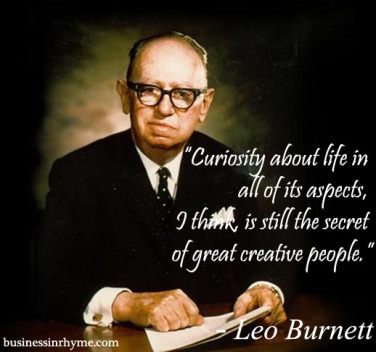Often when I think of poetry I find many similarities with the way we induce innovative thinking. Language and words are our main tools. In innovation practice, ideas and knowledge are our tools that bring forth an idea into life. But not any idea: it has to be the right idea. Just as much as the poem has to use the right words to translate an emotion; an experience. The order of words, their flow and rhythm need to be comprised in the best possible way – in the same fashion, an innovative idea needs to solve the problem, improve function or usage.
Poets need a large vocabulary to ‘play’ with; arrange and disarrange words (even invent new ones) to precisely convey their meaning, simulate tone and voice: so does innovators and design thinkers need a deep knowledge of science, engineering, management and business processes to deliver an innovative product.
Yet, doesn’t everything happen in desired moment when we need it. A lot of factors and conditions influence the process of innovative thinking, no matter how much we try to take the control of situation (having the tools and skills we need, time and space, and other resources).
We too much dwell on the speed of innovation, becoming to much obsessed with competition, costs, who delivers innovation.
Questions about what creativity really is, how to harness creative potential that every employee carries and fostering creative spirit for the higher good (contribution and purpose) are neglected and overlooked. In between those moments, real creative solutions somehow slip through the cracks of management rules, policies, principles. In the end, many organizations experience product saturation and volatile stagnation.
There is poem by Ted Hughes: The Thought Fox
I imagine this midnight moment’s forest:
Something else is alive
Beside the clock’s loneliness
And this blank page where my fingers move.
Through the window I see no star:
Something more near
Though deeper within darkness
Is entering the loneliness:
Cold, delicately as the dark snow,
A fox’s nose touches twig, leaf;
Two eyes serve a movement, that now
And again now, and now, and now
Sets neat prints into the snow
Between trees, and warily a lame
Shadow lags by stump and in hollow
Of a body that is bold to come
Across clearings, an eye,
A widening deepening greenness,
Brilliantly, concentratedly,
Coming about its own business
Till, with a sudden sharp hot stink of fox
It enters the dark hole of the head.
The window is starless still; the clock ticks,
The page is printed.
After reading the poem, it is obvious that he tells a story about the struggle poet has while writing. But it can have a much deeper meaning: we can put an analogy in this poem to a struggle we face while in any type of creating. It poses questions: what generates creative idea, can we ‘catch’ it on time, how to make that ‘element of surprise’ part of our every day life and welcome it, open-handed? Is it even possible?
Creativity can be seen as something that is alive but hidden, mysterious. It looks for loneliness, isolation to show its face:
‘Though deeper within darkness
Is entering the loneliness’
In the beginning is gentle and cautious. We have to observe it with care, not to scare our “fox” idea:
‘A fox’s nose touches twig, leaf;
Sets neat prints into the snow’
And then, there is a breakthrough moment, powerful – even bombastic, when all gentleness is gone, when idea appears in its full dimension and brightness:
‘Till, with a sudden sharp hot stink of fox
It enters the dark hole of the head’
The poem suggests, to some extent creativity includes tactful and careful planning, a lot of brevity, but we cannot always predict when exactly is going to ‘strike’. Can we prepare for the creativity “attack”? The best we can do is to be open and responsive to the signs it leaves for us; to awaken that childhood curios nature (even in business organizations) when we ‘spy with our little eye’ every spark, just ready to let it ignite our creative spirit.



Hi, I hadn’t read this poem for so long, thank you for including it. It reminds me of teacher training college, when The Thought Fox was one of the poems we studied.
LikeLiked by 1 person
I’m glad you like it 🙂 Thanks for reading my post, much appreciated!
LikeLiked by 2 people
In between those moments, real creative solutions somehow slip through the cracks of management rules….will stay with me for a long time!
A wonderful insight – thank you
LikeLiked by 1 person
Thank you for reading my post! 🙂
LikeLiked by 1 person
I am conscious of the role that the Arts can play in the development of Leadership in organisations. Your posts are a daily reminder…thank you!
LikeLiked by 1 person
I’m glad you find value and a way to apply in your work some of my findings. It’s great motivation for me to continue this blog 🙂
LikeLike